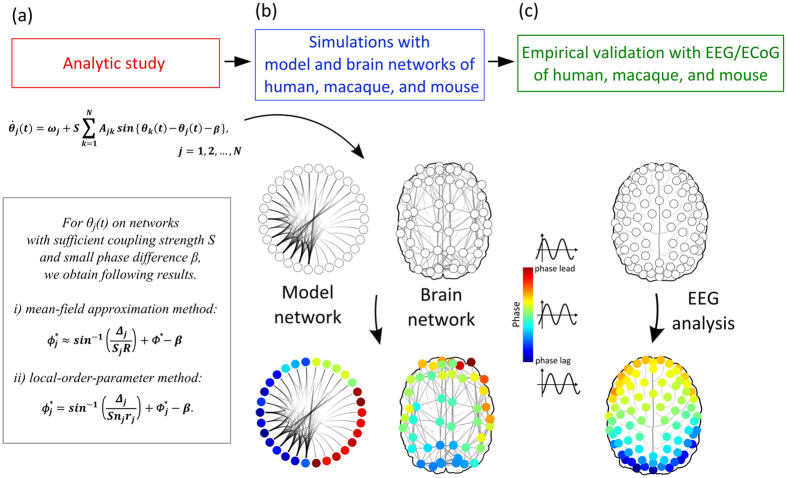Figure 1. Schematic of analysis.
To find a mathematical relationship between network structure and directionality, we performed an analytical study with a coupled oscillator model, numerical simulation, and empirical confirmation.(a) In the analytical study, we developed a novel method that calculates the behaviors of oscillators in an inhomogeneous network, in order to derive a mathematical relation between network structure and directionality.(b) In the simulation study, we compared the analytical results with the simulation results of homogeneous/inhomogeneous model networks and diverse brain networks.(c) In the empirical data analysis, we compared the directionality from the analytical calculation and the directionality in the electroencephalography/electrocorticography(EEG/ECoG) networks of human, macaque, and mouse.

